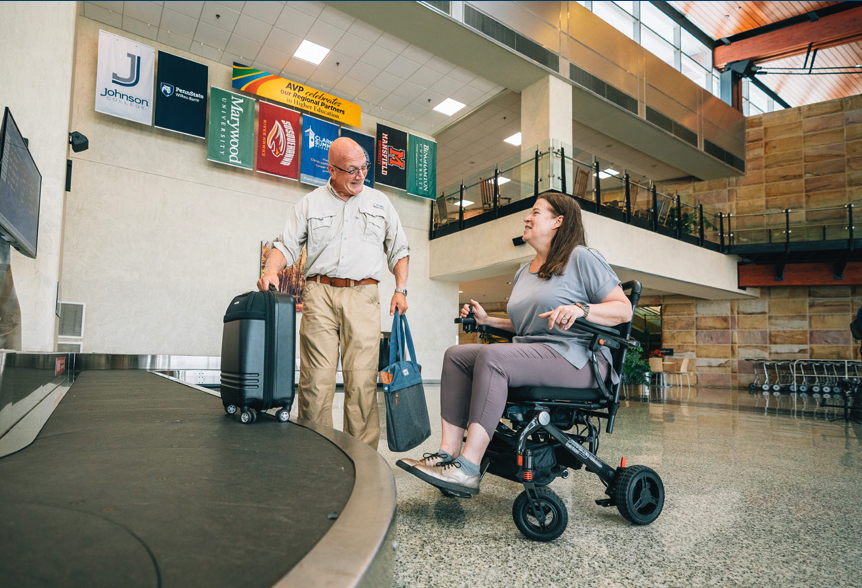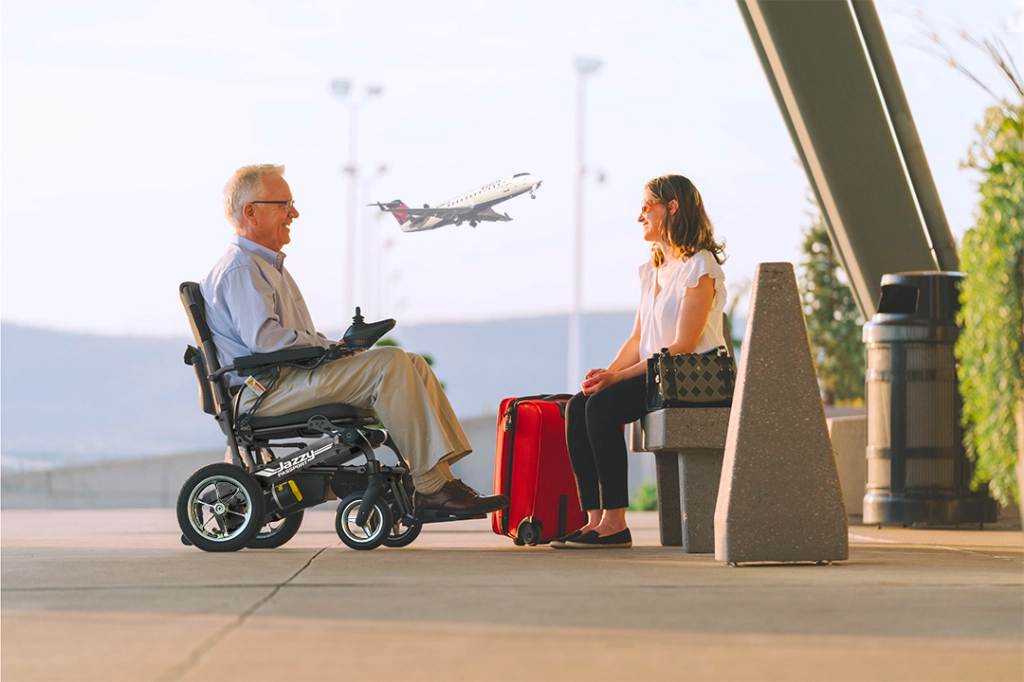One great thing about owning and using a mobility scooter or power wheelchair is that they allow you to get out and see more of the world. We get lots of folks who contact us asking if their scooter is "TSA approved" or will their airline transport their scooter and if so, how much extra does it cost.
We've got the answers here!
First, the law:
US-based airlines are required to comply with the Americans with Disabilities (ADA) act. So they must accept for transport all devices that assists a passenger with a disability in coping with the effects of his/her disability. One thing to note is that the law starts by referring only to "wheelchairs". But then, later in the regulations, it defines wheelchairs as being manual, electric or of a scooter style. Airlines are not permitted to charge a fee to accommodate them. Click here for more information directly from the US Department Of Transportation website.
TSA's requirements
The TSA is only interested in ensuring that you're not bringing items that could be used as weapons onto an aircraft. So you can expect that they'll want to take a good look in all the nooks and crannies onyour power scooter or power wheelchair. But that's it. They do not have any say in your ability or right to bring your mobility device to the gate, etc.
How the process ACTUALLY works
Besides coming to the airport with your scooter, you should have the following additional items:
- A printed out copy of the ADA regulations from the link above because occasionally, you'll run into airline personnel who aren't familiar with the law.
- The Material Safety Data Sheet for the battery pack for your mobility device. You can get that from us or from the manufacturer of your scooter.
- Copies of the pages from your owner's manual that explains how your device comes apart and goes together.
 When you arrive at the airport on your day of travel, you will ride your scooter through TSA security and on to the departure gate. At your departure gate, an airline representative will tag your scooter and its parts and give you a claim check. PUT THAT IN A SAFE PLACE! Then, they will take your scooter or power chair from you and stow it in the belly of the plane where baggage goes. It will be important that you allow extra time on your day of travel to allow the airline to properly stow your scooter.
When you arrive at the airport on your day of travel, you will ride your scooter through TSA security and on to the departure gate. At your departure gate, an airline representative will tag your scooter and its parts and give you a claim check. PUT THAT IN A SAFE PLACE! Then, they will take your scooter or power chair from you and stow it in the belly of the plane where baggage goes. It will be important that you allow extra time on your day of travel to allow the airline to properly stow your scooter.
Be prepared to show them how your particular model can be configured for stowage, what parts are removable, how the steering tiller folds, etc.
Helpful tip: Bring along printed instructions or pages from the owner's manual that describes how your mobility device comes apart and goes together in a plainly marked envelope that can be attached to your mobility device.
When you arrive at your destination, they will bring your scooter or power chair up from the baggage compartment to your arrival gate and deliver it back to you.
Travelling outside the United States
Most non-US based airlines who operate at US airports will also comply with ADA regulations but you'll want to check with them when you're booking your travel.
Helpful tip: Don't forget the adapter to allow your battery charger to be plugged into a wall socket in the country your're travelling to.
Scooter batteries
There's been a lot of discussion in the last several years of the hazards of transporting certain kinds of batteries on commercial aircraft. Some airline personnel may have questions about the batteries in your scooter. If your scooter uses a Sealed Lead Acid (SLA) battery as nearly all mobility devices do, your airline will or is supposed to accept that battery pack without any special handling. Do have that Material Safety Data sheet handy just in case, however.
If your scooter is powered by lithium ion batteries, your airline will very likely have further questions about the battery pack related to fire safety. Some li-on battery packs are not able to be transported on a commercial aircraft. So it is REALLY important that you have that Material Safety Data sheet with you. The airline may require that you remove the battery pack from the scooter and carry it on board with you. Or they may even refuse to allow the battery pack at all which they can do.
If you're shopping for a scooter now and contemplating needing to take it with you when you travel by air, do check with us or the manufacturer to see what the rules would be for transport of the lithium ion battery pack on airplanes. Some scooter models offer two lithium ion battery pack options- one for general use and then a smaller one that's approved for airline transport. To keep your travel inconvenience to a minimum, consider a scooter powered by Sealed Lead Acid batteries as opposed to Lithium Ion batteries.

Cruise Ships
Cruise ships who sail under a US flag will also comply with the ADA regulations and accommodate a power mobility scooter or power wheelchair and charge no fees. You'll want to check with the cruise line at the time of booking for the exact boarding procedure.














